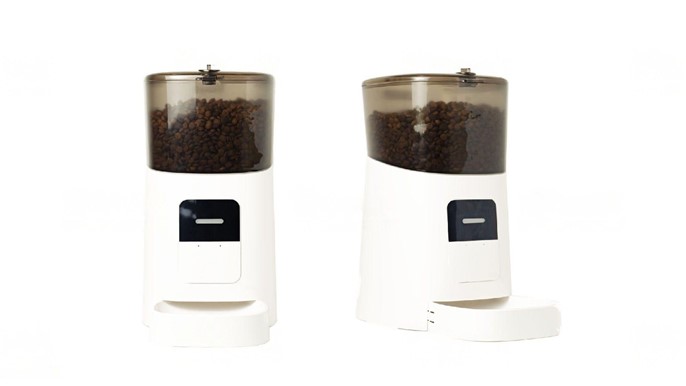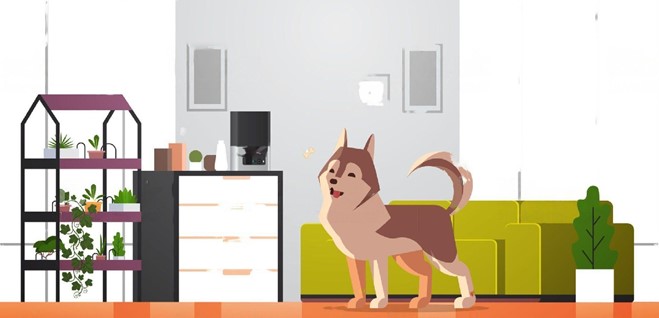
Automatic Dog Feeder Buying Guide
Automatic pet feeders are a great way to make sure your furry friend always has access to fresh food and water. They are also ideal for pet owners who work long hours or travel frequently.
There are many different types of automatic pet feeders on the market, and it can be hard to decide which one is right for you and your pet.
This buying guide will help you choose the best food dispenser for your furry friend, based on their specific needs and requirements.
How to Begin Planning for Pet Feeder Shopping
1. Don't be fooled by the marketing
When it comes to automatic pet feeders, don’t be fooled by the marketing. Just because a pet feeder is advertised as “automatic” doesn’t mean that it’s the best option for your pet.
There are a variety of factors to consider when choosing a pet feeder for your furry friends.
2. Do your research
For example, you want to get an automatic feeder for your feline pet as a cat owner. It’s important to do your research on a potential automatic cat food dispenser before purchasing.
Not all pet feeders are created equal, and there are a variety of factors to consider before making your purchase.
Carrying out research with the vital considerations (which will be listed later on in this article) you are sure to get the food dispenser that is just right for your pet.
3. Set your budget
It’s important to consider your budget when making your purchase. If you have a limited budget, you may want to consider a basic model that doesn’t have all the bells and whistles.
However, if you’re willing to spend more, you’ll find that there are some high-quality automatic pet feeders on the market that can provide your pet with everything they need.
4. Request recommendations
If you’re not sure where to start when it comes to choosing an automatic pet feeder, ask for recommendations from friends or family members who have pets.
They may be able to point you in the right direction and help you find a quality product that will suit your needs and budget.
5. Select a high-quality product
When it comes to automatic pet feeders, it’s important to choose a quality product. There are a lot of cheaply made products on the market, and these are not going to last long or provide your pet with the nutrition they need.
Select an automated pet feeder that is made from high-quality materials and that has been designed with your pet’s needs in mind.
Automatic Pet Food Dispenser Considerations and Requirements
When selecting an automated pet feeder, there are several variables to consider.. Let’s look at these and more considerations in detail to help you choose the right type of auto-feeder for your needs.
1. Food category:
The type of food dispenser you choose will depend on the food type it is needed to dispense. There are three main types of food dispensers: dry food dispensers, wet food dispensers, and treat dispensers.
The type of food to be dispensed is an important consideration, as some automatic feeders are only compatible with dry food, while others can accommodate both wet and dry food.
Dry food dispensers are great for dry kibble or pellets, while wet food dispensers are perfect for canned or wet food. Treat dispensers are ideal for treats or smaller meals.
If you plan on feeding your pet wet food, it’s important to choose a model that can accommodate this type of food, as wet food can spoil quickly if not stored properly.
2. Capacity:
The capacity of the feeder is another important consideration, as you’ll want to choose a model that can hold enough food for your pet’s daily needs.
If you have multiple pets or if your pet eats large meals, you’ll want to choose a model with a larger capacity.
Some automated pet feeders even have many chambers for dispensing different types of food at different points in time throughout the day. Most units have a capacity of 5–10 cups (40–80 oz).
3. Pet Type or Size:
The type of pet you have will play a big role in deciding which type of automatic pet feeder is best for them.
There are some feeders that have been made specifically for cats or dogs.
If you have a dog, especially one from a larger breed, you will need to choose an automatic dog feeder that is durable and can dispense the appropriate amount of food for its size.
If you have a cat, you will need to choose a feeder that is small and compact, as cats typically eat smaller meals than dogs.
4. Unit Dimensions:
The size of the unit is important because you need to make sure it will fit into the designated space in your home. The unit should also be big enough to hold enough food for your pet’s entire meal.
5. Feeding Habits:
Another important factor to consider is your pet’s feeding habits. If your pet is a grazer, then you will need to choose a feeder that can dispense small amounts of food throughout the day.
If your pet is a gulper, then you will need to choose a feeder that can dispense large meals at once. Gulpers typically need to eat more often than grazers, so they will require a larger capacity feeder.
6. Power Source:
The power source is important because you need to choose a unit that can be powered by either batteries or AC power. AC power is more reliable, but batteries give you the flexibility to move the unit around as needed.
7. Price:
These feeders can range in price from $30 to $200+, so it’s important to consider your budget when choosing a feeder for your pet.
If you are on a tight budget, there are still some great options available that won’t break the bank.
However, if you have some extra money to spend, some high-end features may be worth the investment, such as timers and portion control dispensers. The price of the unit is important because you need to find a unit that fits within your budget.
8. Add-on Features:
Additional features like a water dispenser or an ice pack compartment can also be helpful, especially if you live in a hot climate or if your pet tends to overeat.
Water dispensers help keep your pet hydrated, while ice pack compartments help keep wet food fresh for longer periods. Some automatic feeders come with additional compartments for storing treats or wet food.
Other Add-On Features That Can Improve Functionality Include:

1. Portion Control:
If you are concerned about your pet’s overeating, then a portion control dispenser may be a good option for you. These units dispense a set amount of food at each meal, so you can rest assured that your pet is getting the proper nutrition.
2. Timer:
A timer is a great feature to have if you need to leave your pet home alone for long periods. You can program the unit to dispense food at specific intervals, so your pet always has fresh food available.
If your pet has diabetes or another medical condition that requires them to eat small meals throughout the day, you’ll need an automatic feeder that dispenses food at regular intervals.
3. Dishwasher Safe:
Some automatic pet feeders come with removable parts that are dishwasher safe, which makes cleaning the unit a breeze.
What to Avoid When Choosing An Automatic Feeder For Pet
There are a few things to avoid when selecting an automated pet feeder.
- Don’t buy the cheapest pet feeder you can find.
- Avoid pet feeders made of flimsy materials or that lack a sturdy design.
- Stay away from pet feeders that have a lot of small parts.
- Avoid pet feeders that require batteries.
- Don’t buy a pet feeder that doesn’t come with a warranty.
- Avoid any unit without an adequate power source, as this could lead to your pet not getting fed on time.
- Avoid any unit that is not easy to clean, as this can lead to bacterial growth and contamination.
Conclusion:
As you go about selecting an automatic pet feeder, there are many factors to consider to find the best model for your needs.
The type of food it will dispense, the capacity of the feeder, and additional features like a water dispenser or an ice pack compartment are all important considerations.
By taking the time to find the right model for your needs, you can be sure that your furry friend always has access to fresh food and water.